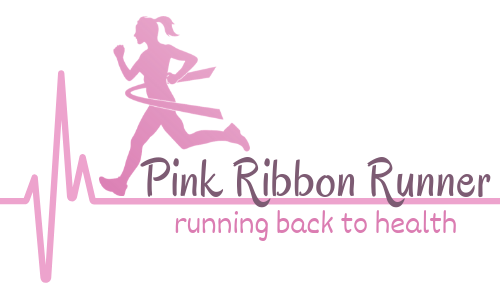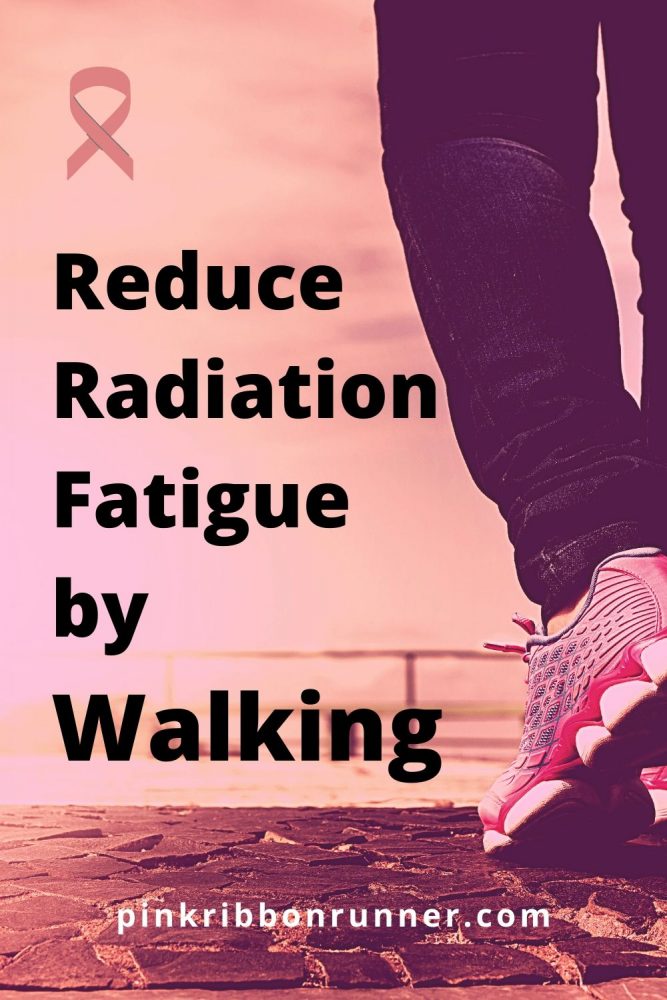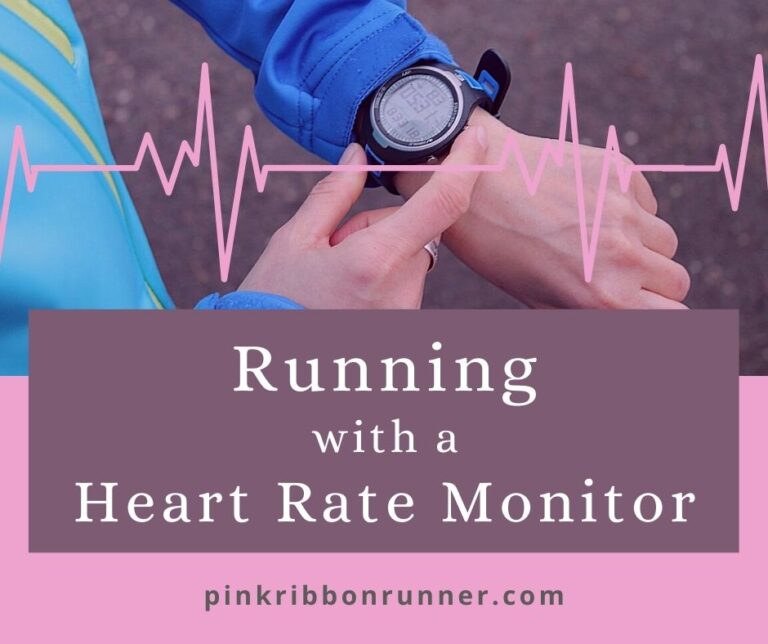Walking Away Side Effects of Cancer Radiation Therapy
Fatigue is the most reported side effect of cancer radiation therapy. Radiotherapy can impair your body’s ability to take in and use oxygen. It affects muscle strength. And, ultimately, it can affect your quality of life when you feel exhausted all the time. But the good news is that walking can help improve all that.
This post contains affiliate links. As an Amazon Associate, I earn from qualifying purchases.
The Real Reason for My Obsession with Fitness
I have a confession to make. I didn’t start this whole fitness and wellness journey thing intentionally. It wasn’t like I woke up one day and say “Hey Tricia, let’s get healthy”. No, it started mostly by accident and was a result of my frugalness.
My radiation oncologist prescribed daily radiation treatments for 3 months. After fretting about how this would affect my skin and body, I started to worry about the cost. The radiation treatment costs themselves were covered, but I still needed to pay for hospital parking. That was a significant cost of about $5-10 per day, depending on how long I would be at the Cancer Center.
The Parking Fees Were Enough to Get Me Walking
Add up the minimum of $5 per day for 3 months and you get over $450. And that was only if I was in and out of my treatments quickly. The final total could have been much higher.
For someone who hadn’t worked for many months going through surgery and chemotherapy, that was a price I wasn’t willing to pay.
I was at an advantage, however. I already had a parking spot about 1.5 miles from the hospital. So, I decided to walk to and from my radiation appointments. I committed to walking these 3 miles a day to and from the Cancer Center.
That was the best decision I ever made on my cancer journey. Walking every day to and from my appointments was likely one of the reasons I experienced very little side effects of my radiotherapy. I was a little tired. But talking with some of my fellow radiotherapy patients, I certainly didn’t have it as bad as some.

Radiotherapy for Cancer
To destroy cancer cells, doctors often prescribe high doses of radiation. These doses are usually focused on the specific area of cancer. Because it is so focused, there are usually less whole-body side effects compared to chemotherapy.
Some people don’t experience many side-effects of radiation. I was, thankfully, one of those people. Others experience quite severe side-effects, but this is less common. And there is a whole range of experiences in between.
The Main Side Effects of Radiation Therapy
Side effects of radiation typically start showing up around 2 to 3 weeks into therapy. But this can vary with individual experiences.
In general, radiotherapy can cause skin damage and fatigue. These are commonly reported side effects across all the cancers.
Side Effects Vary with Type of Cancer
Some of the side effects of radiation depends on the type of cancer and the area of the body affected.
For example, breast and lung cancer patients have their chest or upper torso radiated, so have more arm and upper body side-effects.
Prostate and cervical cancer patients have their lower torso irradiated, giving them more abdominal side effects and leg issues.
This means that certain exercises may be more difficult for some cancer patients. You should always consult with your doctor about what exercise program is right for you.
Radiotherapy Side Effects are Location Specific
Beyond fatigue and skin problems, radiotherapy side effects seem to be specific to the area being radiated.
For example, if you are having your chest area treated, you may also experience shoulder stiffness, cough, or shortness of breath.
If you are having your pelvis area treated, you may experience diarrhea, incontinence, or rectal bleeding.
It is not the intent of this article to go into detail on these side-effects. You need to discuss these with your radiation oncologist. If you experience any side-effects of radiation therapy, you need to tell your doctor. But, as you will read soon, some of the side effects you experience may influence what exercise you can do.
10 Benefits of Exercise During Radiation Therapy
The American Cancer Society recommends that cancer patients return to normal daily activities as soon as possible. Inactivity can lead to increased number and severity of cancer treatment side effects.
They recommend at least 150 minutes of moderate-intensity aerobic activity per week. Aerobic activity is exercise that gets your heart rate up and makes you breathe a little harder.
Many research studies have shown the benefits of exercise for cancer patients.
1. Reduces fatigue
In one study, breast and prostate cancer patients who exercised reported significantly lower cancer-related fatigue during a 4-week program. They also describe themselves as having a better quality of life during radiation treatments.
2. Improves nerve function
Radiation treatments can affect nerve function. Research has shown that exercise can help patients with nerve damage.
3. Strengthens the heart & lungs
Moderate-intensity aerobic exercise strengthens heart and lungs. If done in a carefully monitored program, exercise can help cancer patients experiencing heart problems due to treatments.
In fact, incorporating exercise into a cancer patient’s treatments early on can help protect against the risk of heart disease from treatments.
4. Stabilizes body weight
Having extra body fat raises the risk of cancer treatment failures. Exercise burns calories and fat. So, exercise and healthy eating habits can help prevent weight gain.
5. Improves brain function
In a recently published Memory & Motion Study, exercise improved cognition scores in breast cancer patients. This shows that exercise can help with the foggy brain that comes with both chemotherapy and radiation.
6. Improves mood
Exercise produces happy chemicals (called endorphins) in our brain. This is the “runner’s high” that some athletes experience. But you don’t need to run a marathon to experience this wonderful side effect. Any exercise that gets your heart rate up can get those endorphins flowing and improve your mood.
7. Reduces risk for bone loss
Many cancer treatments, including radiation, can weaken bones. It is estimated that 70% of cancer patients experience bone loss. Exercises, including walking, can help strengthen and repair bones.
8. Improves sleep
Many cancer patients have trouble sleeping. Another study showed that a home-based walking program helped breast cancer patients undergoing radiation therapy sleep better.
9. Reduces risk for cancer recurrence
Numerous studies have show that exercise lowers cancer recurrence rates. Exercise also helps lower the risk of death from cancer and cancer treatments.
10. Improves quality of life
Exercise makes you feel better, gives you more energy, reduces side effects of treatments, and makes you stronger. It just makes life easier and better.

Walking is a Good Place to Start
But going to an aerobic fitness class or taking up running may not be a good idea if you are still in or just finished treatments. If you aren’t accustomed to these types of higher intensity workouts, then you shouldn’t start them just yet.
The good news is that any activity that keeps you moving can be a benefit. And walking can be the perfect way to ease back into fitness. It is low impact and gentle on your body. You can easily control pace and distance to tailor a walk fit program just for you.
I have talked to many cancer survivors that have undergone radiotherapy. Most of them say that walking has helped them tremendously. They have more energy. And they don’t seem to have those severe side effects.
Precautions and Safety Tips When Walking During Radiation
Walking is deemed safe for most cancer patients. In particular, studies show it can benefit breast, prostate, colon, cervical, lung, brain, and thyroid cancer patients. It also appears safe for leukemia patients too.
But as discussed above, cancer patients may experience different side effects to radiation treatments. Some of these side effects may limit your ability to walk and exercise.
When it comes to safety and walking, common sense and a chat with your oncologist can go a long way.
Don’t walk if it is painful
You may be too painful to walk if you had radiation to your lower body. Some patients experience a problem with the nerves in their feet and legs (called peripheral neuropathy). And some may have fluid build up in their legs (called lymphedema).
Don’t walk if you are short of breath
Sometimes cancer and radiation therapy can affect the bone marrow. This is especially a concern if you are having pelvis radiation, where a large portion of your bone marrow resides. This can lower the number of red blood cells that carry oxygen.
You may also experience shortness of breath if you are having radiation in the chest area.
Don’t walk if you are too dizzy or off balance
Dizziness may be a problem if you are low on red blood cells and can get enough oxygen out to your body. It may also be due side effects of radiation to your upper body, neck and head.
If you have peripheral neuropathy in your feet, then your balance may be off causing you to fall more easily. If it is mild, you may be able to walk with assistance.
Be careful if you have lymphedema
Another side effect of radiation therapy is lymphedema. If you have issues with swelling of your hands, arms, legs, feet or chest, then you should be careful. Lymphedema can be worsened with certain exercises. You should be working with a lymphedema specialist to find the exercises best suited to help you. But know that exercising is also good for helping with this condition, if you do the right ones.
Work with your oncology team
If you are experiencing any side effects that makes walking difficult, talk to your oncology team. There are other exercises you could do to keep you moving, such as chair yoga perhaps.
Once you are feeling better and these side-effects have subsided, then start walking.

10 Tips for Walking During and After Radiation Therapy
If you have the okay from your oncologist to start walking, let’s look at some tips to get you going.
1. Start slowly
Go easy on yourself. You don’t have to walk fast or far. You have or are going through cancer treatments that can affect your heart, lungs, joints and muscles. Start slowly. Walk slowly. Keep your walks short in the beginning.
The great thing about fitness is that you are always working to improve. It doesn’t matter if you are just starting from off the couch, you have been going to the gym for decades or you can run a marathon. The idea is always to improve on where you are currently at.
2. Break your walks into shorter chunks
You don’t have to walk miles to experience the benefits. You just need to raise your heart rate up for a little while. And walks can be broken into more manageable chunks.
Maybe start by walking down your block and back. Try to get to 10 minutes. Do this a couple of times per day.
A 10-minute walk 3 times per day is just as good as a 30-minute walk all at once.
3. Wear a good pair of shoes
You should have a comfortable pair of shoes. The shoes should support your feet in all the right places.
I like these Saucony walking shoes. But you should find a pair that are right for you and fit your feet perfectly. Go see someone at a store that knows about walking and feet. If you have joint issues, go see a chiropodist first.
Not having proper shoes for walking can cause you discomfort in the short term. Common issues may be blisters, foot pain, or bruising.
Not having supportive walking shoes can cause you joint problems later. Having proper arch support and a straight achilles tendon will help prevent knee, hip and back issues as you progress to walk faster and further.
4. Set goals for improving
Setting goals is a good way to stay motivated. If you can only walk to the end of your block today, try to reach the end of the next block by next week. If you are only able to walk 10 minutes right now, try walking 15 minutes next week.
Many people will use streetlamps to gauge their progress. Try walking past 1 or 2 streetlamps before heading home. Next time add one more lamp post before heading back.
Setting reasonable goals for yourself is the way to improving your fitness and health. Increase slowly by adding a little more each week.
5. Keep track of your walks
Logging your walks can be very rewarding. I like to watch myself improve. When I look back at where I started, I amaze myself.
You can use a fitness tracker such as Fitbit or Garmin. There are phone apps, such as MapMyWalk. Some people like to use spreadsheets to track their progress. You can do this on a computer, with Excel, for example. Or you can simply create your own spreadsheet with a pen and paper.
6. Reward yourself for achieving a goal
And once you achieve your goal, don’t forget to reward yourself. It takes effort. You moved outside of your comfort zone. You did it! So, celebrate.
7. Cover up when out in the sun
Radiation treatments leave you more sensitive to sunlight. It is important to cover up when outdoors in the sunshine.
It is better to cover areas that have been radiated with clothing. But if this can’t be done, sunscreen could be used if the skin isn’t broken, blistered or irritated.
I bought a big floppy hat for my walks and wore long sleeve shirts, even in mid-summer. I found these long sleeve sun protection tees that were perfect for keeping me cool, yet protected from the UV sunlight.

I love my LandsEnd Sun Guard Tees.
I thought they would be hot for summer, being long sleeve.
But, they are surprizingly cool.
The risk is real. Don’t risk exposing your radiation area to the sun.
If you have burns or sores on your skin, be sure to get advice from your oncology team about what you can use to protect yourself when out in the sun.
Walking indoors on a treadmill or around your house is also an option if you can’t cover up.
8. Avoid crowded places
Focused radiation doesn’t usually impact the immune system. However, the type of cancer you have or if you have had chemotherapy may have weakened your immune system. If bones are the target of radiation, especially pelvic bones, then the immune system may be impacted by radiation. If these examples are you, then you don’t want to expose yourself to a lot of germs.
Walking out in the fresh air and sunshine, especially among the trees, can boost your immune system.
But avoid crowded places where you could be exposed to viruses and bacteria from other people. You might not want to go walk around the county fair or local zoo just yet.
9. Walk with someone
Walking with a friend or family member is very enjoyable and helps to pass the time. But it can also help with your safety. If you are weakened or off balance from your cancer treatments, having someone there walking with you is a must.
It is always a good idea to carry a cell phone with you too.
Tell others where you are going and when you will be back. This is good practice for everyone, not just cancer patients. But it is even more important for cancer patients.
10. Plan your route to include bathrooms
If you have had radiation to your pelvis or abdomen region, you may have issues with your bowels or bladder. Even if you are feeling great, it is a good idea to plan your walking routes to include washroom locations. Walking can sometimes stimulate the need for a bathroom.
I know this one from experience. It is the reason there are so many port-o-potties along the course at walking or running events.
Walking After Radiotherapy
After my radiation treatments were done and my burns healed, walking had me in good enough shape to consider running. I was walking up to 3 miles a day at a brisk pace.
So, when I learned of a cancer survivor running program, I signed up. Since, I have progressed over several years, slowly building distance and speed.
I recently ran my first full marathon of 26. 2 miles. That was a huge accomplishment. When I started radiation therapy, I could barely walk without stopping every 5 minutes to catch my breath.

But no matter your fitness goals, walking is a great place to start. It is gentle and low impact.
Walking is a fitness activity that you can continue life long.
I still walk to this day. I enjoy walks around my neighborhood, and I love hiking out in the forests.
Are you ready to start walking? Check out the Pink Ribbon Runner Guide to Walking or other articles in the Walking Archives.
You may also find my post on the Do’s and Don’ts of Eating during Cancer Radiation Therapy helpful.











My wife had five chemotherapy and thirty radiotherapy that finished last Christmas and then had an uro infection and has been an invalid since , unable to walk at all. The Oncology team are no help and the GP is like Doc Martin gone wrong. Any ideas what to do ?
I am so sorry your wife is having to deal with all this. Have you tried seeing a urologist? If your other docs don’t know what is happening, perhaps it is time to see a specialist. Make sure she is getting plenty of fluids too. I hope she finds relief soon. For exercise, is she able to do any chair yoga, stretches or workouts? If she can try to just move, as she is able, it all helps. All my best!
Amazing post! Some people are so skeptical about medications. This can be helpful
Thankks for the great information. My sister just finished radiation. She was not doing any type of exercise before or during her treatment. But I’ll share this with her to hopefully inspire her to start walking slowly.
I wish your sister well. I hope she finds walking as helpful as I did. She should start slowly, especially if she wasn’t active before treatments.
What a fantastic article! Since my RA, walking is the only consistent exercise I can do. I knew walking was good for me but not THAT good! The tips you provide are also excellent. Such an informative read. Thank you for your expertise.
Unfortunately, one of my first grade students had just gone through her first round of radiation treatment. She is currently fatigued and not wanting to eat. Reading your post was very helpful as I work to understand and support her family as best as I can.
I am sorry to hear about your student. Cancer is tough! Walking does help. Even if she can just walk down the hallway and back is something. I am currently researching and writing a blog post about eating during radiation. I hope to publish it soon. Maybe that can help her too. I wish her well!
This is an excellent piece! Motivational, educational, and cautious. I love the tips given for specific situations. Well done.
Thank you for your kind words and praise.
You are a warrior! Keep shining and spreading your light!
I am a radiation therapist and can attest to the fact that this is true. My patients who keep active and a positive outlook ALWAYS do better than those that don’t. It’s inspiring to see that you are doing well and sharing what you’ve learned with others.
I’m printing this out for my family member going through this right now – great article!
Tricia, this is an interesting article to me. I’ve never been closely associated with a cancer patient. But your post explains a lot to me about the WHY to exercise.